Naturally Occuring D3 in Flax Seed Oil (Softgels)
$24.95 – $119.70
- The Most Absorbable, Bio-Available Vit D3 Possible
- Improved Immune System Function
- Required for Bone Health
- Decreases Muscle Pain
- Improves Cardiovascular Function
- Improves Brain Development
- Description
- Additional information
- FAQ'S
- ADDICTIONAL INFORMATION
- Supplement Facts
- Scientific Support
- Reviews (55)
Description
What if there was a supplement that was only PENNIES per DAY and has been shown to:
- Improve Immune System Function (You get sick less)
- Improve Muscle Function
- Improve Cardiovascular Function (for a healthy heart and circulation)
- Improve Respiratory System Function (for healthy lungs and airways)
- Improve Brain Development
- Have Anti-Cancer Effects
Would you take it? Of course!
My family and I take Vitamin D every day. Let me take a couple minutes to explain to you why we take Vitamin D, how much to take, and what kind of Vitamin D is the best.
Vitamin D is an “essential nutrient.” What “essential” means is that you need it to survive and your body cannot produce it without outside hehlp; You have to get it from an outside source.
An easy analogy to understand is sunlight for plants. A plant will die if it doesn’t get any sunlight. If the plant gets some sunlight it will survive, but it won’t thrive like it would if it was getting all of the sunlight it needed. The ways sunlight benefits the plant are countless. And trying to figure out all the different ways sunlight helps a plant is pointless.
The fact is, if a plant gets all of the sunlight it needs it will thrive. If it gets some sunlight but not optimal amounts it will live but not be very healthy. If it gets no sunlight it will die.
This is exactly how Vitamin D works for you. If you are getting the required amounts of Vitamin D all of the countless systems in your body that are affected by Vitamin D will work properly. If you are getting some vitamin D, but not enough, you can survive; but you won’t be healthy. If you get zero Vitamin D you will die.
If you don’t have optimal levels of an essential vitamin you cannot be at optimal health. It really is that simple.
So where does Vitamin D come from? Just like a plant needs the sunlight to survive, your body gets Vitamin D from sunlight. When sunlight hits your skin your body produces the “hormone” Vitamin D. Yes, it is actually considered more of a hormone than a vitamin. A hormone that that you need to survive!
Now here is the problem. People rarely get enough sunlight on their skin, which causes us to be deficient in Vitamin D. Think about winter in Wisconsin. You wake up when it’s dark. You sit under artificial lights all day at work. You then leave work in the dark. There is so little sun exposure that it’s not possible to get adequate amounts of Vitamin D production.
Now think about this. Winter is cold/flu “season.” It is absurd to think that there are more bacteria or viruses floating around in the winter months. Viruses and bacteria, good and bad, are around us constantly. What happens is days are shorter, days are colder, we cover up our skin and get little to no sunlight. Our Vitamin D production goes down and our immunity goes down. Vitamin D is essential for an optimally functioning immune system.
Lowered Vitamin D levels = lowered immune function = equals increased sick days.
It has been 11 years now since I started in practice and I haven’t taken a single sick day. I know taking Vitamin D on a regular basis has played a big role in that.
Another problem is this recent fear mongering that sun will cause skin cancer and you need to live in a cave or lather yourself in toxic sun screens 24/7. Here’s the thing. Sun is very healthy…until you burn yourself! Marketing has us believing all sun is bad. It’s not. It is only bad in excess! This fear of the sun is also a contributing factor in our Vitamin D deficiency epidemic.
I have read that a person needs to get 15 minutes of direct sunlight per day on fully exposed arms and legs. This is just a vague average. People with darker skin need more time in the sun than fair skinned folks, how close you are to the equator makes a difference; there are so many factors that it’s hard to tell exactly how much sunlight you need.
Think about skin color and human evolution. Our ancestors that lived closer to the equator had darker skin. People living in northern climates or areas of less sun exposure had lighter skin. Over time people evolved to be able to absorb sunlight and produce vitamin D more efficiently. People with darker skin need longer time in the sun to produce adequate vitamin D levels. Dark skinned people living in northern, less sunny climates rarely have sufficient Vitamin D levels.
What is known for sure is that the vast majority of people don’t get enough sunlight and are deficient in this essential nutrient.
Now for the great news…..Vitamin D supplementation is a very effective and a very inexpensive way to boost your vitamin D levels to optimum. There are two kinds of Vitamin D available; Vitamin D2 (ergocalciferol) and Vitamin D3 (cholcalciferol). Only buy Vitamin D3! It is the naturally occurring form, the most absorbable and most beneficial. Notice the CHOL in Cholcalciferol…CHOLesterol is also a hormone. Sunlight basically turns cholesterol into cholcalciferol (Vitamin D). Your body is so amazing. It works perfectly if we just give it the right pieces…and don’t poison it with junk!
I recommend about 5,000 IU’s of Vitamin D per day for adults and 35 IU’s per pound per day for kids. When it comes to Vitamin D, it is just about impossible to take so much it causes harm. I don’t ever worry about that. An analogy I once heard is “living in America today while worrying about vitamin D toxicity is like dying of thirst in the desert while worrying about drowning.”
You can go to the hospital and get your vitamin D levels checked. When you do the hospital will write you a Vitamin D prescription (often D2, the bad form) at 50,000 IU’s once per week. I have no idea why that is. Taking some every day makes a lot more sense than taking one massive amount once a week. Maybe that dose is needed for a prescription to be required.
Whenever you take any vitamin, it is very important that the vitamin is actually absorbed into your body. A vitamin is absolutely useless if it just ends up in the toilet. Vitamin D is fat soluble and thus best absorbed when taken with a fat. That is why our vitamin D is in two very healthy fats; Olive Oil & Flax Seed Oil.
I offer two options when it comes to vitamin D. I have a liquid version for kids and small perles for adults. Each perle contains 5,000 IU’s of Vitamin D3 in Flax Seed Oil. You are getting the best form of Vitamin D in a healthy Omega 3 fat to ensure maximal absorption. The only better option would be to get adequate amounts of sunlight on a regular basis.
For kids not old enough to swallow pills, I offer Vitamin D in certified organic olive oil, in a little glass bottle with a dropper. You can just put a couple drops in their food or directly in their mouth. The dropper is a great way to control the dosage as well as eliminate the need for pill swallowing.
But Dr Czys I feel fine….I always have two answers for this. One – fine is not good enough. I want you to feel flippin awesome. Two – Waiting until you feel bad or get sick before taking action is foolish. Keep adequate amounts of Vit D in your system and avoid getting sick all together!
Additional information
| Weight | .24 lbs |
|---|---|
| Dimensions | 2 × 2 × 3.5 in |
| Quantity | 1 Bottle ($24.95 per bottle), 2 Bottles ($23.95 per bottle), 3 Bottles ($22.95 per bottle), 4 Bottles ($21.95 per bottle), 5 Bottles ($20.95 per bottle), 6 Bottles ($19.95 per bottle) |
FAQ'S
How much should I take per day? I recommend taking about 35 IU’s per pound of bodyweight per day. I’m 200 pounds so 35 X200 = about 7,000 IU’s per day. Each of the capsules in this bottle is 5,000 IU’s so I take 1 capsule one day, two capsules the next, then 1 and so on to average about 7,000 per day.
If you are 150 pounds 150 * 35 = 5,250 so just take 1 capsule every day.
How much should I give my kids? Same rule as above. 35 IU’s per pound of bodyweight per day. I’d recommend getting our liquid Vit D product for smaller more specific doses.
Do you need to take Vit K with Vit D? It’s quite easy to get adequate amounts of Vit K from food, especially if you follow my food plan which you can get free by clicking “freebies” at the top of the page.
ADDICTIONAL INFORMATION
What is vitamin D?
Although most often categorized as a vitamin, vitamin D is actually a hormone. It is the one steroid I take.
Vitamin D3 is produced in the skin of humans after exposure to ultraviolet B sun light. Your liver and kidneys convert Vit D3 to the crucial form of vit D calcitriol. Calcitriol or biologically active vitamin D is often considered the most potent steroid hormone in human physiology.
What does vitamin D do in the human body?
Like all steroid hormones, vitamin D is involved in the production of proteins and enzymes which are essential for health. Vitamin D promotes calcium absorption and maintains blood levels of calcium and phosphate for proper bone development and muscle action. Some of the other roles of Vitamin D are in the regulation of cell growth, immune function, nerve/muscle action, and regulation of inflammation. It assists the action of insulin(diabetes) and has been shown to have a significant role in cancer prevention. Many cells have Vitamin D receptors and many genes are influenced by the action of Vitamin D. In fact, it has been estimated that the human genome has over 2700 binding sites for Vitamin D. This is why being deficient in Vitamin D can lead to increased risk of many diseases.
Why is vitamin D genetically required for wellness and prevention in humans?
The innate immune system is the component of our immune system that is genetically programmed to respond to antigens (viruses, bacteria, fungi). The innate immune system uses what are termed effectors to respond to antigens or invaders. The most studied of these effectors are named antimicrobial peptides or AMPs. AMPs not only attack the invaders they also trigger tissue repair and activate the acquired immune system.
Recent research has shown that vitamin D up-regulates the genetic expression of AMPs in immune cells. Vitamin D also plays an important role in controlling the inflammatory response initiated by specialized immune cells called macrophages. A deficiency of vitamin D means increased inflammation.
Why is vitamin D required by Everybody?
Blood tests show that on average just about everyone is deficient in Vit D. In our industrialized society it is nearly impossible to get enough sun light for adequate vit D production. And, it is nearly impossible to get adequate vit D through diet.
What this means is that you require supplementation to attain sufficient levels, and that without supplementation you are at severe risk of developing the illnesses associated with deficiency of vitamin D.
The issue of vitamin D deficiency as a major causal factor in immune system related illnesses such as seasonal cold and flu, chronic illnesses such as heart disease and cancer, and atopic and autoimmune disorders like allergies and multiple sclerosis.
How much should my family and I be taking?
Adults: At least 5,000 IU’s per day.
Children: About 2 drops or 1,000IU’s per 40pounds of body weight, per day.
Store at room temperature away from direct sunlight.
Can Vitamin D deficiency lead to serious illness?
There are literally thousands of peer-reviewed scientific articles establishing vitamin D deficiency as a significant causal factor in serious illnesses. At this point we can confidently state that having sufficient levels of vitamin D is essential for both health and prevention.
Vitamin D insufficiency can result in thin, brittle, or misshapen bones, while sufficiency prevents rickets in children and osteomalacia in adults, and, together with exercise, helps to protect older adults from osteoporosis. Vitamin D also modulates neuromuscular function, reduces inflammation, and influences the action of many genes that regulate the proliferation, differentiation and apoptosis of cells which is critical in terms of cancer prevention.
Evidence even suggests that vitamin D is involved in the triple current childhood epidemic of autism, asthma, and autoimmune diabetes.
What are the symptoms of Vitamin D deficiency?
The most important thing to know is that in the VAST majority of cases, vitamin D deficiency is asymptomatic up to the point of serious illness. Waiting for symptoms to take action is like waiting for a heart attack before you start to exercise.
Frequent Colds and/or Flu
Depression
Chronic pain
Joint pain
General muscle pain and weakness
Headaches
Muscle cramps
Weight gain
Restless sleep
Fatigue
High blood pressure
Poor concentration
Bladder problems
Constipation or diarrhea
What diseases are associated with Vit D deficiency?
Because Vitamin D is so important in the regulation of so many cellular, tissue, organ, and system functions, deficiency of this essential nutrient has been shown to play a role in almost every major disease. The real issue is not what specific disease will develop but the fact that deficiency results in a decrease of health and function and an increase risk of illness. The list of diseases associated with vitamin D deficiency continues to grow. Here is a list of diseases associated with vitamin D deficiency that are reported in the peer-reviewed scientific literature.
Muscle aches
Body Pain
Heart disease
High blood pressure
Metabolic Syndrome and Diabetes
Osteoporosis and Osteopenia (Bone Loss)
17 varieties of Cancer (including breast, prostate and colon)
Obesity
Influenza (flu)
Colds
Autoimmune diseases
Multiple sclerosis
Rheumatoid arthritis
Osteoarthritis
Chronic Pain
Chronic fatigue syndrome
Fibromyalgia
Bursitis
Parkinson’s Disease
Depression and Seasonal Affective Disorder
Alzheimer’s Disease
Gout
Infertility and PMS
Periodontal disease
Psoriasis
What are the sources of vitamin D? How do we get sufficient amounts?
The answer is SUNLIGHT. In order to get the daily requirement of vitamin D from sunlight you would need to have direct summer month sun exposure on your arms and legs for a minimum of 10-15 minutes per day. This is why vitamin D deficiency is so common in non-tropical climates, especially in the winter months.
It should be noted here that humans with pigmented skin (non-caucasians) require significantly more sun exposure to achieve sufficient vitamin D levels. This means these people are at an even greater risk for illnesses caused by vitamin D deficiency.
As humans migrated away from the equator we had to devise ways of replacing the sun as a source of vitamin D. In other words, in order to survive non equatorial climates humans had to find a source of vitamin D other than sunlight. Over thousands of years of experimentation virtually every human culture learned that the best way to stay sufficient in vitamin D in environments with reduced sun exposure was to consume marine animal liver or liver oil.
Why is there an epidemic of vitamin D deficiency?
The fact is that we spend too much time indoors and when we go out into the sun, we lather sunscreen on ourselves. We no longer enough sunlight and we have a major vit D deficiency epidemic on our hands.
How much vitamin D do I need?
As a general rule, old people need more than young people, big people need more that little people, fat people need more than skinny people, northern people need more than southern people, dark-skinned people need more than fair skinned people, winter people need more than summer people, sun block lovers need more than sun block haters, sun-phobes need more than sun worshipers, and ill people may need more than well people.
What we need to know is whether or not we can attain sufficient vitamin D levels without supplementation. To answer this question we must first know how much vitamin D humans require.
According to Dr. Robert Heaney, humans utilize approximately 4000 IUs of vitamin D3 per day.
It would be prudent to ensure a minimal daily intake of 1000 IUs of vitamin D3 for children, 2000 IUs for adults, and 4000 IUs for pregnant and lactating women who have not previously been sufficient. It would also be prudent to have vitamin D levels tested.
The only 2 reliable sources of vitamin D are the sun and high quality supplements.
Sunlight exposure is the only reliable way to generate vitamin D in your own body. In fact, this is such an efficient system that most of us make 20,000 units of vitamin D after only 20 minutes of summer sun without suntan lotion. That’s 100 times more than the government recommends per day! There must be a good reason why we make so much in so little time. The sun’s rays cannot penetrate glass so you will need skin exposure outdoors to to generate vitamin D in your skin. Also sunscreens, even weak ones, almost completely block your body’s ability to generate vitamin D.
Can I take too much Vitamin D?
There is no evidence anywhere in the published literature that even 10,000 IUs per day of vitamin D is toxic to humans and that human toxicity does likely not occur until over 40,000 IUs of daily consumption. “Vieth reports human toxicity probably begins to occur after chronic daily consumption of approximately 40,000 IU/day.” He goes on to state that “Physician ignorance about vitamin D toxicity is widespread” and concludes by stating that “In fact, living in America today while worrying about vitamin D toxicity is like dying of thirst in the desert while worrying about drowning.” In other words any danger associated with vitamin D is from deficiency NOT toxicity.
www.vitamindcouncil.org/vitaminDToxicity.shtml entitled ‘The Truth About Vitamin D Toxicity’
What is the most absorbable form of Vitamin D?
Most important is that you take vitamin D3, (cholecalciferol) the active form of vitamin D. Do not take vitamin D2 as it is not as biologically active nor as effective, and nor as safe as vitamin D3. Also, vitamin D3 is fat soluble and your body absorbs it much better when combined with a healthy oil like flax or olive oil.
If the Vitamin D is made from lanolin, where does the lanolin come from?
Lanolin is found in sheep’s wool. Don’t worry…the sheep are not hurt! After the sheep are given a haircut the lanolin is extracted from the wool and purified.
Why use flax or Olive Oil?
Vitamin D is a fat soluble vitamin so it is best absorbed when it is in healthy oil form. We could have opted for a low quality less expensive fat carrier like canola or soybean oil. Flax and olive are much healthier options.
Is vitamin D3 safe for my whole family?
Yes. It is not only safe for your whole family it is most important for your kids. Their bodies are growing at an amazing rate. Adequate nutrition is the most important for our children.
What is the ideal blood level of 25 hydroxy vitamin D?
The current ranges for “normal” are 20 to 55 ng/ml. These are much too low!!! They may be fine if you want to prevent rickets or osteomalacia, but not for optimal health. The ideal range for optimal health is 50-80 ng/ml.
Does it need to be refrigerated?
No
Supplement Facts

Scientific Support
BIOAVAILABILITY
- Houghton LA, Vieth R. The case against ergocalciferol (vitamin D2) as a vitamin supplement. Am J Clin Nutr. 2006;84(4):694-697. PMID: 17023693.
OPTIMAL VITAMIN D STATUS
- Dawson-Hughes B, Heaney RP, Holick MF, Lips P, Meunier PJ, Vieth R. Estimates of optimal vitamin D status. Osteoporos Int. 2005;16(7):713-716. PMID: 15776217.
BONE HEALTH
- Shils ME, Shike M, Ross AC, Caballero B, Cousins RJ, eds. Modern Nutrition in Health and Disease. 10th ed. Philadelphia, PA: Lippincott Williams & Wilkins; 2006.
IMMUNE HEALTH
- Cantorna MT, Zhu Y, Froicu M, Wittke A. Vitamin D status, 1,25-dihydroxyvitamin D3, and the immune system. Am J Clin Nutr. 2004;80(6 Suppl):1717S-1720S. PMID: 15585793.
- Ginde AA, Mansbach JM, Camargo CA Jr. Association between serum 25-hydroxyvitamin D level and upper respiratory tract infection in the Third National Health and Nutrition Examination Survey. Arch Intern Med. 2009; 169(4):384-390. PMID: 19237723. Laaksi I, Ruohola JP, Tuohimaa P, et al. An association of serum vitamin D concentrations <40 nmol/L with acute respiratory tract infection in young Finnish men. Am J Clin Nutr. 2007;86(3):714-717. PMID: 17823437.
- Sasidharan PK, Rajeev E, Vijayakumari V. Tuberculosis and vitamin D deficiency. J Assoc Physicians India. 2002;50:554-558. PMID: 12164408.
- Schöttker B, Haug U, Schomburg L, et al. Strong associations of 25-hydroxyvitamin D concentrations with all-cause, cardiovascular, cancer, and respiratory disease mortality in a large cohort study. Am J Clin Nutr. 2013;97(4):782-793. PMID: 23446902.
CANCER
- “Improving calcium and vitamin D nutritional status substantially reduces all-cancer risk in postmenopausal women.” Lappe et al. 2007 Vitamin D and calcium supplementation reduces cancer risk: results of a randomized trial. Am J of Clin, Nutr. 85 (6): 1586-1591.
HEALTHY CELL GROWTH AND DIVISION
- Mullin GE, Dobs A. Vitamin D and its role in cancer and immunity: a prescription for sunlight. Nutr Clin Pract. 2007;22(3):305-322. PMID: 17507731.
- Vitamin D Monograph. Alternative Medicine Review. 2008;13(2):153-164. PMID: 18590351.
SKELETAL MUSCLE HEALTH AND PERFORMANCE
- Bignotti B, Cadoni A, Martinoli C, Tagliafico A. Imaging of skeletal muscle in vitamin D deficiency. World J Radiol. 2014 Apr 28;6(4):119-24. PMID: 24778774.
- Redzic M, Lewis RM, Thomas DT. Relationship between 25-hydoxyvitamin D, muscle strength, and incidence of injury in healthy adults: a systematic review. Nutr Res. 2013;33(4):251-258. PMID: 23602241.
RESPIRATORY HEALTH
- Cannell et al. 2008 Cod Liver Oil, Vitamin A Toxicity, Frequent Respiratory Infections, and the Vitamin D Deficiency Epidemic. Annals of Otology, Rhinology & Laryngology 117 (11): 864-870
- “Epidemiological evidence suggesting a vitamin D connection to these devastating diseases is growing.” Cannell et al. 2008 Cod Liver Oil, Vitamin A Toxicity, Frequent Respiratory Infections, and the Vitamin D Deficiency Epidemic. Annals of Otology, Rhinology & Laryngology 117 (11): 864-870
HEART HEALTH AND LONGEVITY
- Schöttker B, Haug U, Schomburg L, et al. Strong associations of 25-hydroxyvitamin D concentrations with all-cause, cardiovascular, cancer, and respiratory disease mortality in a large cohort study. Am J Clin Nutr. 2013;97(4):782-793. PMID: 23446902.
- Schöttker B, Jorde R, Peasey A, et al., Consortium on Health and Ageing: Network of Cohorts in Europe and the United States (CHANCES). Vitamin D and mortality: meta-analysis of individual participant data from a large consortium of cohort studies from Europe and the United States. BMJ. 2014;348:g3656. PMID: 24938302.
BREAST HEALTH
- Bertone-Johnson ER, Chen WY, Holick MF, et al. Plasma 25-hydroxyvitamin D and 1,25-dihydroxyvitamin D and risk of breast cancer. Cancer Epidemiol Biomarkers Prev. 2005;14(8):1991-1997. PMID: 16103450..
- Janowsky EC, Lester GE, Weinberg CR, et al. Association between low levels of 1,25-dihydroxyvitamin D and breast cancer risk. Public Health Nutr. 1999;2(3):283-291. PMID: 10512563.
- John EM, Schwartz GG, Dreon DM, et al. Vitamin D and breast cancer risk: the NHANES I Epidemiologic follow-up study, 1971-1975 to 1992. National Health and Nutrition Examination Survey. Cancer Epidemiol Biomarkers Prev. 1999;8(5):399-406. PMID: 10350434.
- Lowe LC, Guy M, Mansi JL, et al. Plasma 25-hydroxy vitamin D concentrations, vitamin D receptor genotype and breast cancer risk in a UK Caucasian population. Eur J Cancer. 2005;41(8):1164-1169. PMID: 15911240.
- Robien K, Cutler GJ, Lazovich D. Vitamin D intake and breast cancer risk in postmenopausal women: the Iowa Women’s Health Study. Cancer Causes Control. 2007;18(7):775-782. PMID: 17549593.
- Shin MH, Holmes MD, Hankinson SE, et al. Intake of dairy products, calcium, and vitamin D and risk of breast cancer. J Natl Cancer Inst. 2002;94(17):1301-1311. PMID: 12208895.
COLON HEALTH
- Feskanich D, Ma J, Fuchs CS, et al. Plasma vitamin D metabolites and risk of colorectal cancer in women. Cancer Epidemiol Biomarkers Prev. 2004;13(9):1502-1508. PMID: 15342452.
- Garland CF, Garland FC, Shaw EK, et al. Serum 25-hydroxyvitamin D and colon cancer: eight-year prospective study. Lancet 1989;2(8673):1176-1178. PMID: 2572900.
- Giovannucci E, Liu Y, Rimm EB, et al. Prospective study of predictors of vitamin D status and cancer incidence and mortality in men. J Natl Cancer Inst .2006; 98(7):451-459. PMID: 16595781. Giovannucci E. Commentary: vitamin D and colorectal cancer–twenty-five years later. Int J Epidemiol. 2006; 35(2):222-224. PMID: 16303807.
- Gorham ED, Garland CF, Garland FC, et al. Optimal vitamin D status for colorectal cancer prevention: a quantitative meta analysis. Am J Prev Med. 2007;32(3):210-216. PMID: 17296473.
- Gorham ED, Garland CF, Garland FC, et al. Vitamin D and prevention of colorectal cancer. J Steroid Biochem Mol Biol. 2005;97(1-2):179-194. PMID: 16236494.
- Liberman DA, Prindiville S, Weiss DG, VA Cooperative Study Group 380. Risk factors for advanced colonic neoplasia and hyperplastic polyps in asymptomatic individuals. JAMA.2003; 290(22):2959-2967. PMID: 14665657.
- McCullough ML, Robertson AS, Rodriguez C, et al. Calcium, vitamin D, dairy products, and risk of colorectal cancer in the Cancer Prevention Study II Nutrition Cohort (United States). Cancer Causes Control. 2003;14(1):1-12. PMID: 12708719.
- Peters U, Hayes RB, Chatterjee N, et al. Circulating vitamin D metabolites, polymorphism in vitamin D receptor and colorectal adenoma risk. Cancer Epidemiol Biomarkers Prev. 2004;13(4):546-552. PMID: 15066918.
- Peters U, McGlynn KA, Chatterjee N, et al. Vitamin D, calcium, and vitamin D receptor polymorphism in colorectal adenomas. Cancer Epidemiol Biomarkers Prev. 2001;10(12):1267-1274. PMID: 11751444.
- Theodoratou E, Farrington SM, Tenesa A, et al. Modification of the inverse association between dietary vitamin D intake and colorectal cancer risk by a FokI variant supports a chemoprotective action of Vitamin D intake mediated through VDR binding. Int J Cancer. 2008;123(9):2170-2179. PMID: 18709640.
- Wei MY, Garland CF, Gorham ED, et al. Vitamin D and prevention of colorectal adenoma: a meta-analysis. Cancer Epidemiol Biomarkers Prev. 2008;17(11):2958-2969. PMID: 18990737.
PROSTATE HEALTH
- Ahonen MH, Tenkanen L, Teppo L, Hakama M, Tuohimaa P. Prostate cancer risk and prediagnostic serum 25-hydroxyvitamin D levels (Finland). Cancer Causes Control. 2000;11(9):847-852. PMID: 11075874.
- Faupel-Badger JM, Diaw L, Albanes D, et al. Lack of association between serum levels of 25-hydroxyvitamin D and the subsequent risk of prostate cancer in Finnish men. Cancer Epidemiol Biomarkers Prev. 2007;16(12):2784-6. PMID: 18086789.
- Li H, Stampfer MJ, Hollis B, et al. A prospective study of plasma vitamin D metabolites, vitamin D receptor polymorphisms, and prostate cancer. PLoS Med. 2007;4(3):e103. PMID: 17388667.
- Tuohimaa P, Tenkanen L, Ahonen M, et al. Both high and low levels of blood vitamin D are associated with a higher prostate cancer risk: a longitudinal, nested case-control study in the Nordic countries. Int J Cancer. 2004;108(1):104-108. PMID: 14618623.
55 reviews for Naturally Occuring D3 in Flax Seed Oil (Softgels)
| 5 star | 94% | |
| 4 star | 3% | |
| 3 star | 0% | |
| 2 star | 0% | |
| 1 star | 1% |

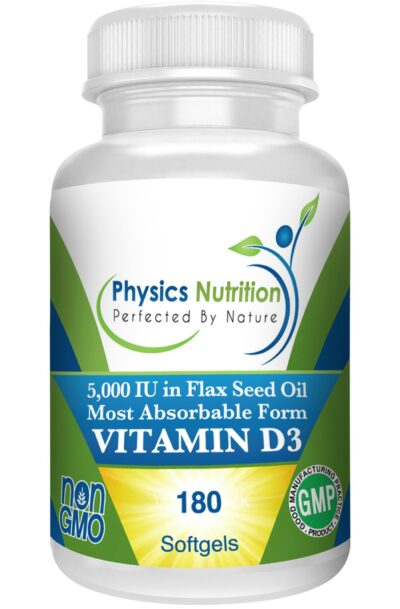
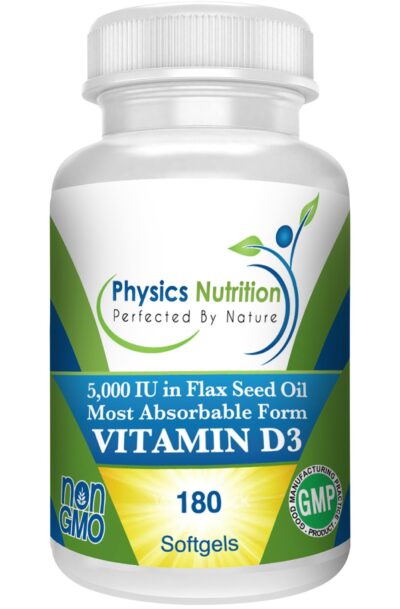


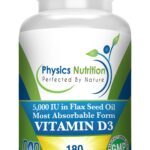
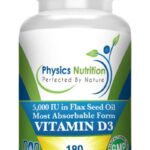
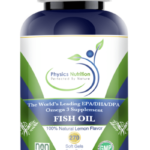
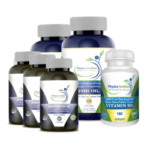







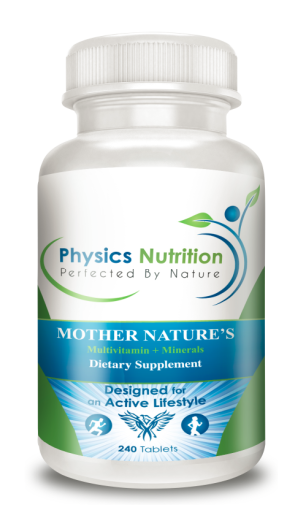
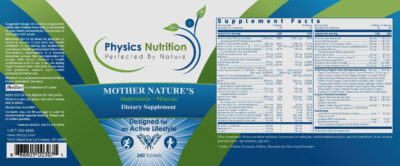
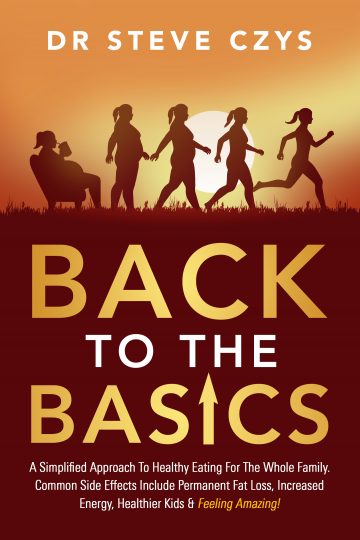


Like your product and customer service ! thank you !
Thank you 🙂 Again, Sorry about the shipping delay.